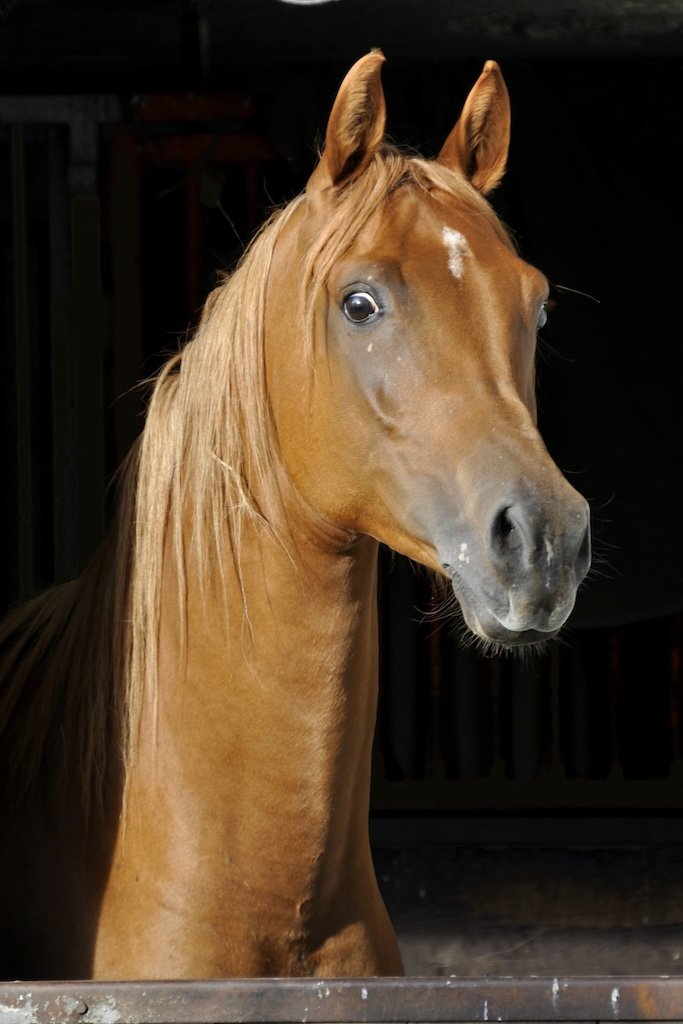Can stressful events cause restriction and stiffness?
What happens in the mind does not stay in the mind. Stressful events can cause issues in the body, especially tension in the ventral chain of muscles.
A lot of horses that are experiencing chronic stress, have restrictions in their diaphragm. Solving this problem requires a multi-pronged approach.
We humans like to put things into boxes. We love doing it in all aspects of our lives, horses included. This is useful to some degree of course, as it makes life easier to understand and it makes complex things more manageable. But even though we like things neatly tucked away in separate boxes, we must never forget that at the end of the day, it's all one big box. For example, we like to think of the horses’ hooves as a separate thing, then we think about their nutrition, their body, their mind, each as its own box.... But each one of those will always influence the others.
When something stressful happens to a horse, we tend to think inside the »mind« box. But the mind and the body are different sides of the same coins, so stress tends to spill over to the body. This can often manifest as tightness. A very common example is tension in the ventral chain of muscles, especially the diaphragm and the psoas, in response to a stressful event. A mentor of mine once told me that in her experience, horses that were weaned abruptly, tend to have issues with the diaphragm later in life. I see a lot of horses with restriction in their diaphragms, but unfortunately, it's not often that the owner knows how the horse was weaned. While this is all speculation, it does make sense. Humans tend to tense up in the psoas and diaphragm in response to stressful events too, so why wouldn't horses? Holding tension in the diaphragm can become a behavioural pattern, if the horse is exposed to stress long term. In the long run, restrictions in the diaphragm have many negative effects; the movement of the ribcage becomes restricted, the spine is less mobile, the horse's breathing is less efficient and the tension tends to spill over to the rest of the ventral chain of muscles.
Releasing the diaphragm and restoring the range of motion in the ribcage is a necessary first step, but for many horses this will not be enough. In addition to the physical solution, we will need to address the mental aspect too – teach the horse how to relax and teach them better strategies for coping with stress. And even that is not something we do and then it's done forever. The horse might be ok to cope with smaller stressors, but might still struggle with bigger stressors. For example, a spooky corner in the arena might be something he can handle without tensing up, but a barn buddy moving away might be a big enough stressor that he becomes restricted in the ventral chain again and will need bodywork to release it. Horses (and humans alike) are complex and we need to always be aware of it. And while it might seem daunting, especially in the beginning of a journey of rehabilitating a traumatised (both mentally and physically) horse, here's something that might help. The vicious cycle of stress and tension is a dark one, but there's an opposite one too – a virtuous cycle. This is where the positive effects of work we do in one realm, positively influence the others. So, bonding with your horse might help him feel more relaxed, which will in turn enable him to release some of the tension he might be feeling in his back. Or, a visit from a bodyworker might make your horse less reactive. Or, finding the right feed will sort out his gut health and make him less aggressive towards other horses. All the good we do with our horses spills over to everything. Keep that in mind when the journey seems tough.
